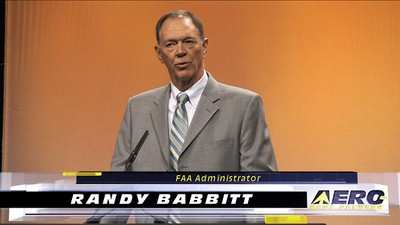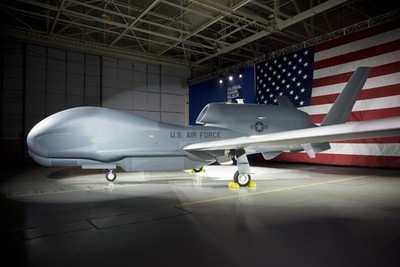Rockwell Collins Thinks 'Outside The Boxes'
Special to ANN: Drew Steketee Reports From Washington (Part
2)
 "Is NEXTGEN real? Yes!"
"Is NEXTGEN real? Yes!"
And, so, Administrator Randy Babbitt put the spurs to FAA's
future ATC "system of systems" for 300 gathered in Washington to
learn more -- and see if it's all really true.
Babbitt attributed industry uncertainty to "memories of historic
steps and missteps of the past" but added, "This is now! FAA is not
the poster-child for mismanagement." Panel after panel of FAA execs
then illustrated how far they've come. Babbitt noted that, "People
who say we can't (manage)… are talking old decades. Now, 90%
of programs are ahead of schedule or under budget. We have reached
a turning point."
"Are we committed?" Babbitt asked, rhetorically.

He cited this year's $867 million NEXTGEN budget and current
long-term commitments for $9.6 billion. Now, he said, "everyone has
to stand up…. NEXTGEN has to be a team sport."
Babbitt then infuriated at least one airline rep (but drew
general applause) by repeating recent statements that "airline
scheduling behavior has got to be realistic. If it continues (to
bunch more and more arrivals or departures beyond capacity), it
will negate the benefits of NEXTGEN."

Global Hawk UAV
Air Traffic Organization COO Hank Krakowski was well-received
when filling-in the details. He posited NEXTGEN capabilities as a
possible solution to fears about unmanned (UAV) operations in
domestic airspace. He and others raised human factors and
over-automation issues, such as controllers falling out-of-the-loop
when they become "air traffic monitors." He called for new
initiatives in controller training and controller "buy-in."
Keynote speaker Clay Jones, CEO of avionics maker Rockwell
Collins, said his real worry was funding -- perhaps some $40
billion over 20 years.
"In this new era, that $40 billion will be hard to come by. Is
there another way?" Jones then delighted the crowd with some
alternative thinking.

Clay Jones, CEO, Rockwell
Collins
Among suggestions: Build a public/private partnership as state
and local governments do now to build new freeway capacity or other
infrastructure. Utilize Third Party skills in software development,
computerization and raising private capital. Consider low-interest
loans, equipment leases and long-term guarantees to ease equipage
fears -- even rebates for useless avionics if the associated ATC
system fails.
To realize "the dream of NEXTGEN on time," Jones said, "we must
consider options."

Audience members praised the voluminous exposition of
information and perspective from this broad array of players.
Perhaps most impressed was the last speaker, Mel Davis of the
controllers' union. An L.A.-area controller and new NATCA staffer,
Davis emphasized that controllers must be brought up to speed on
NEXTGEN.
"The workforce… is ignorant" (on this), he said. "We lack
the relevant information."
Davis looked forward to getting controllers "back in the loop"
now that NATCA and FAA have begun to bury the hatchet. Can
controllers adjust to NEXTGEN? "It's going to take us some time,
but we can do it!" He added that in his mere 35 days thus far at
NATCA headquarters, "I have not yet found a component of NEXTGEN
that puts anybody out of a job."

Many speakers continued to worry about "mixed equipage" where
only 50%-60% of aircraft are NEXTGEN equipped. Some procedural
palliatives were raised but questions linger. Meanwhile, airlines
such as American, Southwest and Alaska trotted out success stories
of their early transition efforts.
Speaker after speaker noted the vastly increased attention and
interest in NEXTGEN this year. Most credited the results of RTCA
Task Force 5 for an emerging consensus that perhaps NEXTGEN is now,
at long last, "for real."
 ANN's Daily Aero-Term (05.17.25): Permanent Echo
ANN's Daily Aero-Term (05.17.25): Permanent Echo ANN FAQ: Contributing To Aero-TV
ANN FAQ: Contributing To Aero-TV Aero-News: Quote of the Day (05.17.25)
Aero-News: Quote of the Day (05.17.25) Classic Aero-TV: Jabiru's New J170-D - An Upgraded and Fine-tuned LSA
Classic Aero-TV: Jabiru's New J170-D - An Upgraded and Fine-tuned LSA Airborne-NextGen 05.13.25: Merlin Tests, Dronetag Accuses, Flying Car?
Airborne-NextGen 05.13.25: Merlin Tests, Dronetag Accuses, Flying Car?








